What we’re actually going to cover in this article is a simple explanation, so you will know all the codes around the tire, so you understand it and we’re also going to make sure that we pick a tire that actually has the correct load capacity for your vehicle, also is the tire on your vehicle now does it actually have the right load capacity, all that kind of stuff.
The Common Knowledge Size Codes
First, let’s get the common knowledge part out of the way. Now a lot of people probably don’t notice. So, I’m going to run through this, and if you already noticed skip to the next part. Alright, we’re going to talk about how to actually read the tire size, now it will take you the imperial measurement first. The writing is a bit distracting.
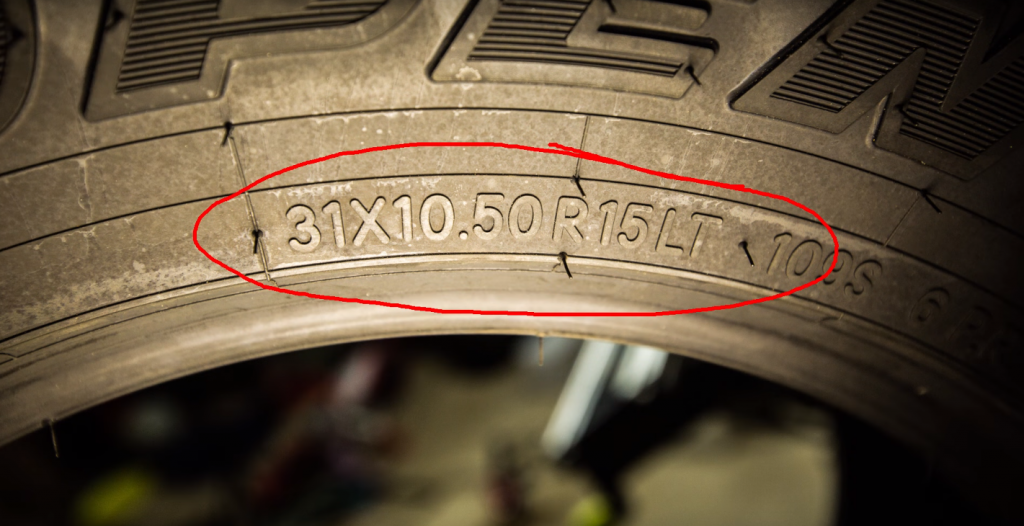
So as you can see, on this tire, we have 31 by 10.50 R15LT, the LT means light truck tire. the 15 means the rim that it actually sits on, and 31 is overall height, the 10.50 is the width of the tire. So really what you mainly will be looking at is the 31 inches, you know it’s a 31-inch tire. But they get a bit complicated when we get to the mixed up measurements while it’s Imperial and metric and it’s a percentage as well. It is confusing. I do it this way, so you can either go for the easy inch wire doing it the Imperial way, or you can go for the complex way.
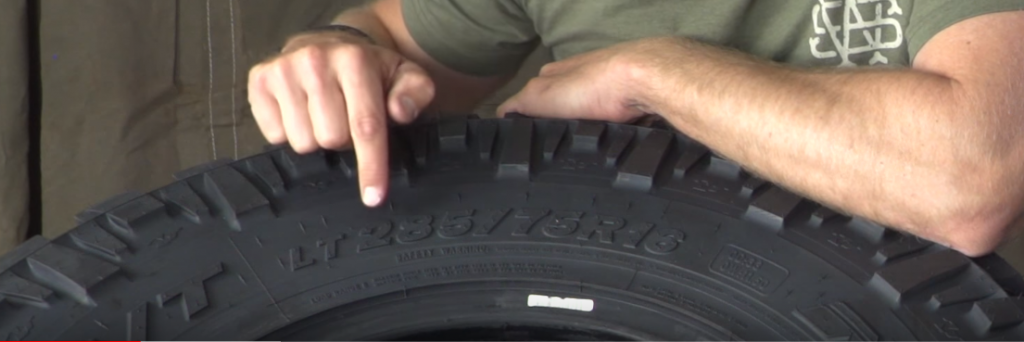
Now this LT light truck tire 285 that is the width of the tire in millimeters. /75, this is the aspect ratio. So this two digit number is the aspect ratio. It is 75% of 285 which equates to 214 if you round it up, that is a height of this tire are 16, that is a radial tire which suits a 6-inch rim. So that means this can only go on a 16-inch rim. Now, most of you guys probably already knew this. The interesting fact here, though if you take the Imperial tire, you can change the other two measurements, you can change the width of the tire, you can change the different room it sits on, but as long as it still says 31, it’s a 31-inch tire. On the other hand, if you change any of these digits on here, it will change the size of the tire, because you have the aspect ratio, so if you change this to a 3-1 575 r16, it goes from a roughly 33 inch to a 35 inch, so a bit more complex here, but you can get type converters calculator converters on the Internet.
The Load Rating
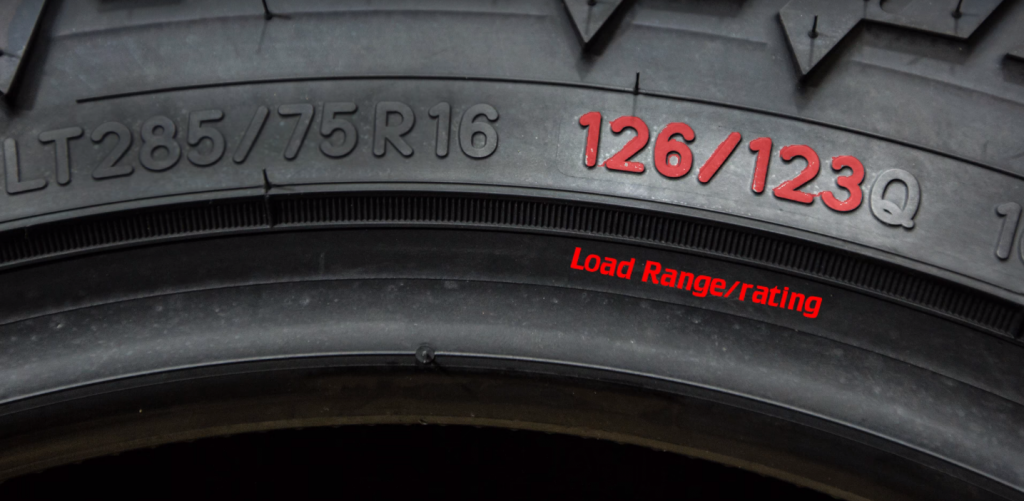
The next thing we will look at is the load rating and speed rating. now speed rating you can only find by reading these little numbers on the inner rim, that’s where most of the information is.
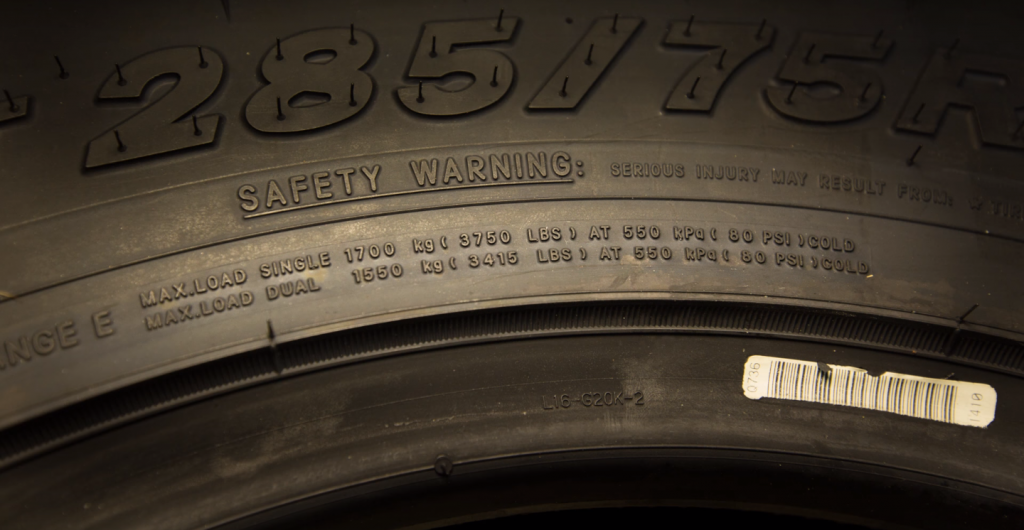
With load rating, you will find it still written in small letters on most hires. It will tell you, for example, max load for a single tire 1,700 kilograms, there’s 1.7 times at maximum psi, that is only at 80 psi I can hold that much weight. That is something you really need to keep in mind if you lower your tires, it is not performing at the same weight capacity. Therefore, in my opinion, it is always better to get something like this they can hold 1,700 kilograms, because if you lower the tire pressure, it’s still holding heaps away. As opposed to the prime example, there are actually two things that want to enlighten you about here.
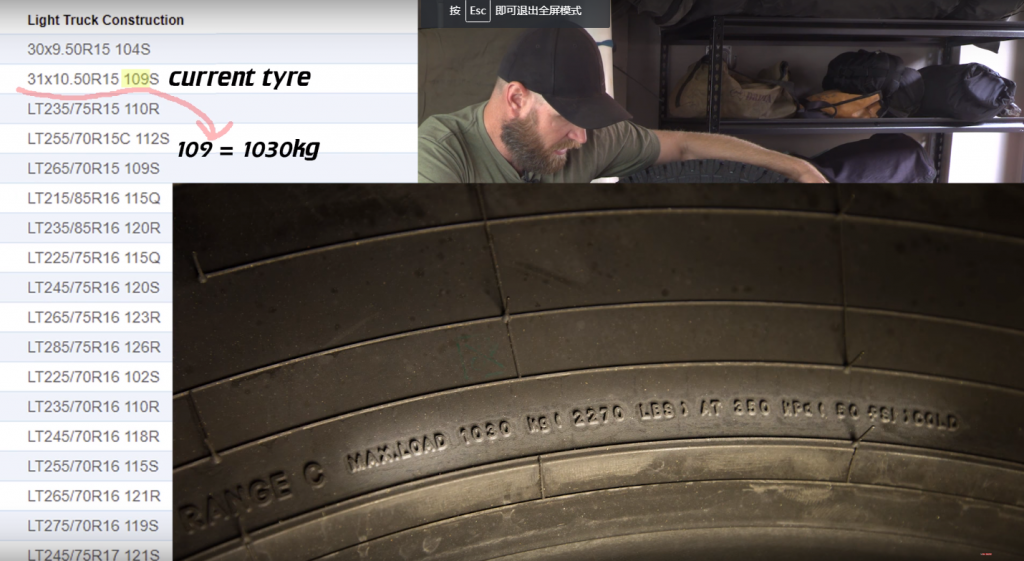
The first one, this tire in particular does the size and everything, its weight capacity is only 1030 kilos, so it is almost 700 kilograms and less weight that it can hold. The interesting thing is this can change, this specific size 10 inch well 31*10.50 on a 15-inch rim.

If you’ve got another variant of this on a 16 inch rim, it can hold a lot more weight. So something to really consider here, if you have a vehicle running on 15 inch rims, honestly, look at getting 6 inch rims because with a 16 inch rim all low capacity is on most tire manufacturers on their tires jumps up quite a bit.

Here’s how you can actually tell without having the red is. Because if you’re looking for tires, you can’t see this little writing, you don’t get to see how many kilos you can hold.
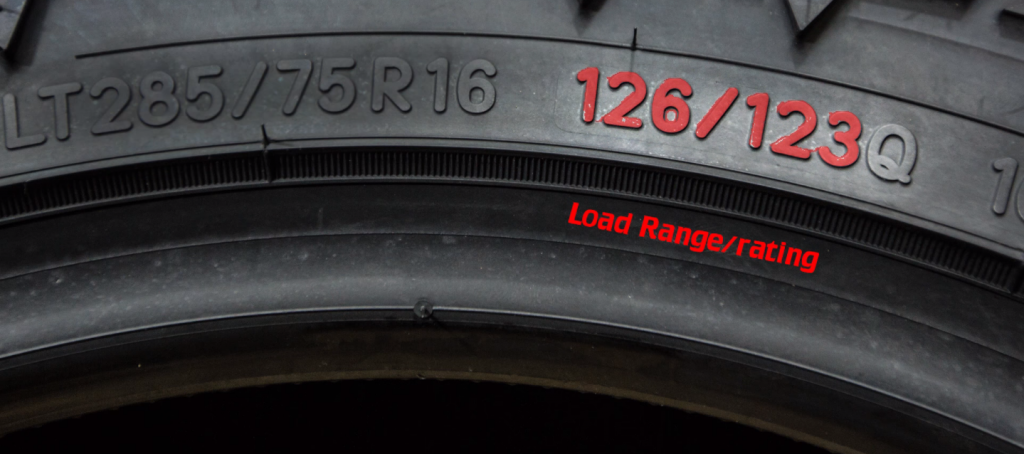
You get this code down here so you have the size code next to the size code after you are 16 or whatever it is. So 126 / 123 Q, the Q is the speed rating, we’ll cover that next, but this is a load rating.

So I have a chart here which I downloaded from the internet, 123 equals 1550, 126 equals 1700. Now it has two numbers here because it allows for a vehicle that can have two tires next to each other, you know like the big dogs Ram, I have two tires next to each other, the load capacity changes slightly when you put two next to each other. Then if you have a one but we’re just worrying about one here, so one is 126, now that corresponds to the chart, 1700 kilos, so when you’re looking online for tires, you won’t see what the weight is, but you will have the 126 or 109 or whatever it is. So that’s where you check to see how much weight this tire can actually hold without wasting your time going to a tire shop and then realizing hang on it can only carry a ton.
